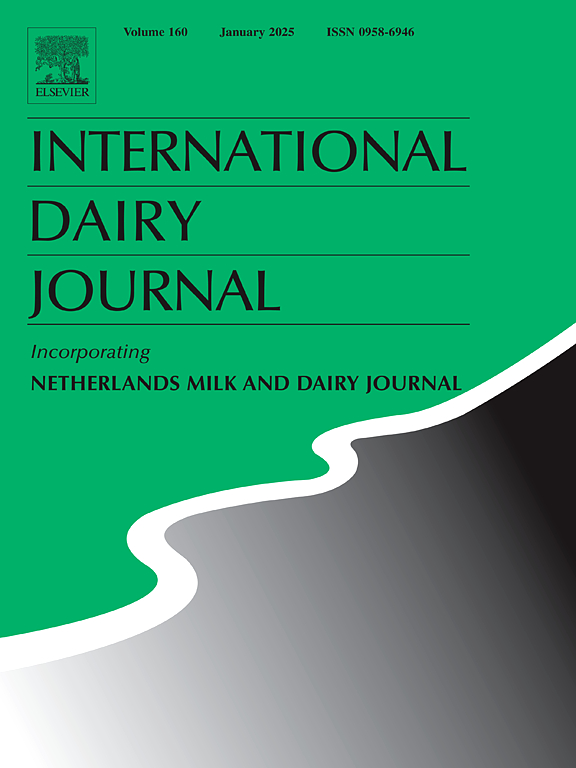Comparative evaluation of amino acid profiles in buffalo colostrum and mature milk
IF 3.4
3区 农林科学
Q2 FOOD SCIENCE & TECHNOLOGY
引用次数: 0
Abstract
The purpose of this study was to compare and evaluate the distinction of amino acid profiles between buffalo colostrum and mature milk. Samples of colostrum and mature milk were collected and analyzed for amino acids. The results indicated that the concentrations of all amino acids in colostrum were significantly higher than those in mature milk. Principal Component Analysis further demonstrated the differences in amino acid composition between colostrum and mature milk. At the same time, from the perspective of amino acid composition, phenylalanine, glutamic acid, tyrosine, arginine, histidine and methionine were found to be more abundant in colostrum than in mature milk. Additionally, both essential amino acids and non-essential amino acids were present in significantly higher amounts in colostrum compared to mature milk. Furthermore, the number of lactations also influenced lysine, glutamic acid, and total amino acids content in colostrum. These findings highlight the substantial differences in amino acid content between buffalo colostrum and mature milk, which may enhance our understanding and utilization of buffalo colostrum and milk.
水牛初乳和成熟乳氨基酸分布的比较评价
本研究的目的是比较和评价水牛初乳和成熟乳氨基酸谱的差异。采集初乳和成熟乳样品,分析氨基酸含量。结果表明,初乳中所有氨基酸的浓度均显著高于成熟乳。主成分分析进一步证实了初乳和成熟乳氨基酸组成的差异。同时,从氨基酸组成的角度来看,苯丙氨酸、谷氨酸、酪氨酸、精氨酸、组氨酸和蛋氨酸在初乳中的含量高于成熟乳。此外,与成熟乳相比,初乳中必需氨基酸和非必需氨基酸的含量都显著较高。此外,泌乳次数还影响初乳中赖氨酸、谷氨酸和总氨基酸含量。这些发现揭示了水牛初乳与成熟乳氨基酸含量的巨大差异,有助于提高我们对水牛初乳和牛奶的认识和利用。
本文章由计算机程序翻译,如有差异,请以英文原文为准。
求助全文
约1分钟内获得全文
求助全文
来源期刊

International Dairy Journal
工程技术-食品科技
CiteScore
6.50
自引率
9.70%
发文量
200
审稿时长
49 days
期刊介绍:
The International Dairy Journal publishes significant advancements in dairy science and technology in the form of research articles and critical reviews that are of relevance to the broader international dairy community. Within this scope, research on the science and technology of milk and dairy products and the nutritional and health aspects of dairy foods are included; the journal pays particular attention to applied research and its interface with the dairy industry.
The journal''s coverage includes the following, where directly applicable to dairy science and technology:
• Chemistry and physico-chemical properties of milk constituents
• Microbiology, food safety, enzymology, biotechnology
• Processing and engineering
• Emulsion science, food structure, and texture
• Raw material quality and effect on relevant products
• Flavour and off-flavour development
• Technological functionality and applications of dairy ingredients
• Sensory and consumer sciences
• Nutrition and substantiation of human health implications of milk components or dairy products
International Dairy Journal does not publish papers related to milk production, animal health and other aspects of on-farm milk production unless there is a clear relationship to dairy technology, human health or final product quality.
 求助内容:
求助内容: 应助结果提醒方式:
应助结果提醒方式:


